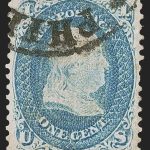MoMo Productions/GettyImages; Illustration by Hunter Newton/Bankrate
Key takeaways
- You can check the value of your savings bond through the TreasuryDirect website.
- Even if you have paper savings bonds, you can check your value online, as long as you have the issue date, bond series and denomination with it.
- To get the most out of your savings bond, it’s important to wait until it matures before cashing it in.
One of the safest investments available is the Series EE savings bond, issued by the U.S. government. Though savings bonds have a low rate of return, there are few investments that guarantee to double your money — but it does take 20 years.
In general, you can usually expect to earn more in interest with a Series EE savings bond than with a high-yield savings account, yet the money in the savings account is more accessible.
“This is the most common type of bond and they are purchased at a discount and accrue interest monthly,” says Paul Sundin, CPA and financial advisor with Emparion. “The bonds mature after 20 years, at which point the U.S. Treasury will guarantee that investors have doubled their money.”
If you have a Series EE savings bond, it pays to know the current value before deciding to cash it in, since in some cases waiting longer can earn you more interest.
Check the current value of your savings bond
Paper savings bonds
The U.S. Treasury stopped issuing most paper savings bonds in 2012 (with the exception of taxpayers who use some of their tax refund to purchase paper bonds), but they never expire and there’s no deadline to redeem them. They do stop earning interest upon maturity. The value of a paper savings bond can be checked by using the savings bond calculator on the TreasuryDirect website and entering this information found on bond:
- Issue date
- Bond series
- Denomination
Once you enter this information, the calculator can let you know what your paper bond is worth if you cash it in today. You can also use the calculator to determine the worth of the bond if you plan to cash it in on a future date. The TreasuryDirect website also allows you to enter information from multiple bonds to create a list and determine the total value.
Electronic savings bonds
Most savings bonds can only be purchased in electronic format nowadays. If you have electronic bonds, you can log into your TreasuryDirect account — which was used to purchase the bonds in the first place — and see the value in your account information under the current holdings tab.
How to cash in savings bonds
If you decide to cash in your Series EE savings bond, the process is fairly straightforward.
- Electronic savings bonds: If you purchased bonds through TreasuryDirect, you can cash them in on that website. Once you log into your account, you can find information on redeeming your bonds. The money will be directly deposited in a checking or savings account within two business days.
- Paper savings bonds: If your bank cashes paper savings bonds, you can bring yours to a branch to redeem them. You can also cash in paper bonds by sending them to Treasury Retail Securities Services along with FS Form 1522.
Cashing in bonds early
Series EE savings bonds can be redeemed a year from purchase, but you won’t see the same level of returns if you cash in your bond before it matures in 20 years. Bond holders only receive the guaranteed double of the face value if you hold the bond until maturity.
“The Treasury only waives the one-year rule if you experience a disaster and need to tap your cash sooner,” financial adviser Sundin says.
Additionally, if bonds are redeemed before the fifth year, the last three months of interest are forfeited, which can significantly reduce the total value of your savings bond. For that reason, Sundin cautions against purchasing savings bonds unless there’s a specific purpose for them in your portfolio.
Another feature of the Series EE savings bond is that you can also keep the bond beyond its maturity date. Bond holders continue to earn interest for up to 30 years, making the bond even more valuable the longer it is kept.
Bottom line
Series EE savings bonds mature after 20 years, and they’ll continue earning interest for 10 more years. As such, holding onto your bonds for three decades is the way to collect the largest amount of interest. Whether you have paper savings bonds or electronic ones, it’s easy to check the value of your savings bond using the federal government’s TreasuryDirect website.
Read the full article here
















